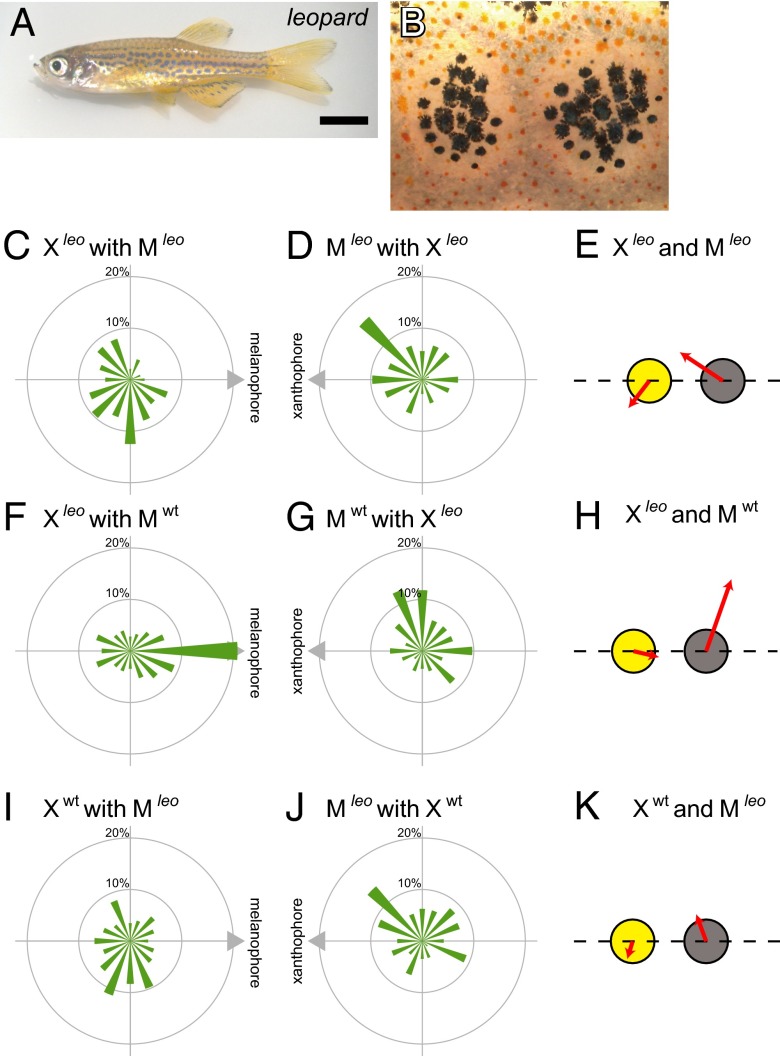Fig. 5.
Interactions among leopard pigment cells. (A) The appearance of a leopard mutant, which has a spotted pattern. (B) Magnified image of the surface of leopard. Melanophores are surrounded by xanthophores, and the separation between them is clear. (C) The migration profile of leopard xanthophores interacting with leopard melanophores. The mean scalar speed of xanthophores was 1.29 μm/h. (D) The migration profile of leopard melanophores interacting with leopard xanthophores. The mean scalar speed of melanophores was 1.65 μm/h. (E) Merged movements of interacting leopard xanthophores and melanophores. (F) The migration profile of leopard xanthophores interacting with WT melanophores. The mean scalar speed of xanthophores was 1.16 μm/h. (G) The migration profile of WT melanophores interacting with leopard xanthophores. The mean scalar speed of melanophores was 2.46 μm/h. (H) Merged movements of interacting leopard xanthophores and WT melanophores. (I) The migration profile of WT xanthophores interacting with leopard melanophores. The mean scalar speed of xanthophores was 0.91 μm/h. (J) The migration profile of leopard melanophores interacting with WT xanthophores. The mean scalar speed of melanophores was 1.31 μm/h. (K) Merged movements of interacting WT xanthophores and leopard melanophores. (Scale bar: A, 5.0 mm; B, 100 μm.)

